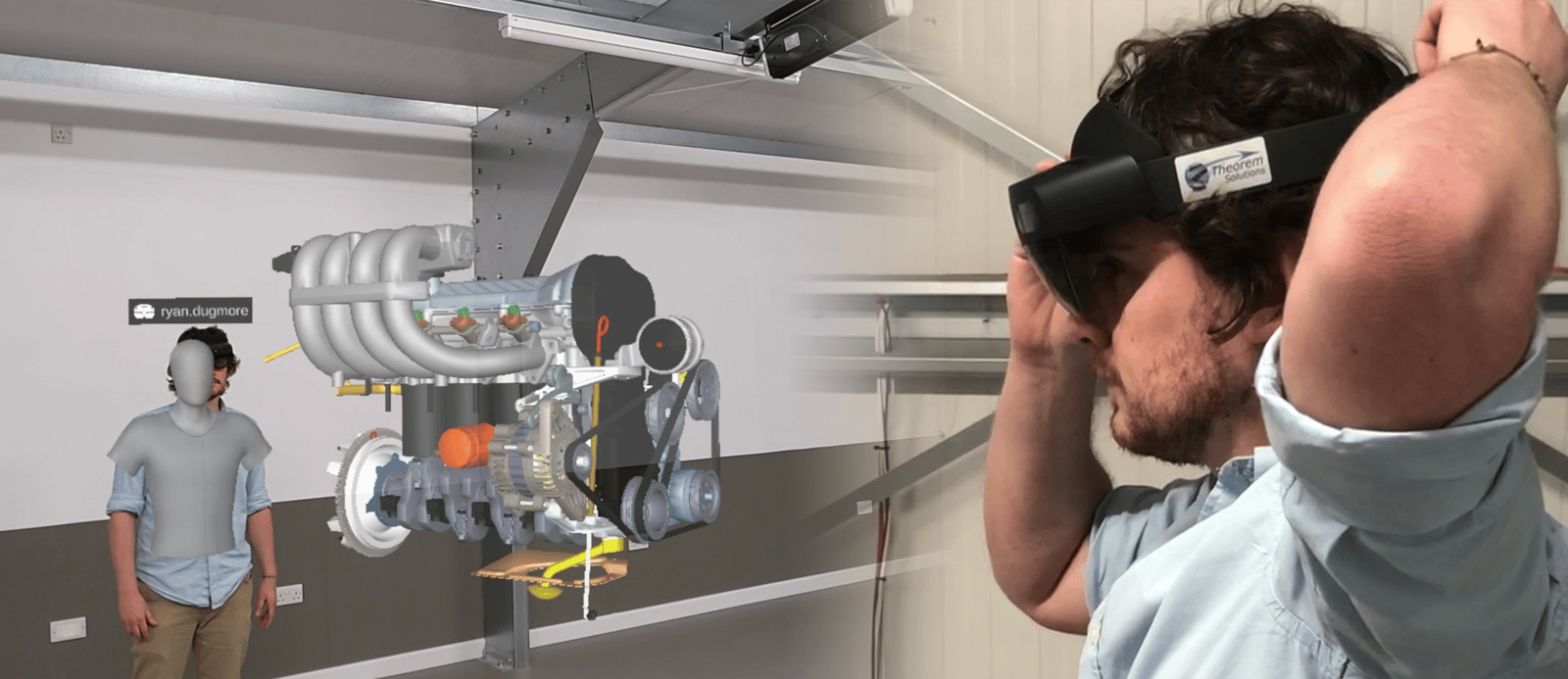The latest release of Theorem’s eXtended Reality suite for full scale visualization and remote collaboration, Theorem-XR, is now available with added support for Microsoft HoloLens 2, Quest 2 and Azure Remote packaging.
With additional performance enhancements to the Theorem-XR experience suite and Visualization Pipeline included as part of this release, Theorem-XR offers greater levels of productivity enhancing features to support the XR user.
In brief:
- HoloLens 2 extensions – Visualization and Factory layout experiences are now fully supported, so users can utilise Theorem’s menus with the double handed controls and gestures recognised by the HoloLens 2, such as grab, zoom, pick up and move to collaboratively review and build data from within Theorem’s experiences.
- Quest 2 untethered- The Quest 2 device from Facebook can be used tethered to a computer, or untethered, meaning the user is not tied to their workstation. Alongside our standard VR apps which can be used on the tethered device, Quest 2 users can now use Theorem-XR experiences on the move with Theorem’s standalone Android application for Quest 2 when in untethered mode.
- Azure Remote packaging- Theorem now provide cloud hosted and managed instances of the visualisation pipeline using the Microsoft Azure portal, for customers who don’t want to manage their own data or infrastructure. Customers can upload their data to the server, and call it back to their XR device, and only require a URL to access their stored data. Theorem will set up virtual machines at an agreed specification to run annually for a fixed cost.
Theorem-XR enables you to visualize your 3D CAD and PLM assets in context and at full scale, using Augmented, Mixed and Virtual Reality technologies on the device of your choice. Theorem-XR is data and device neutral, and offers a range of use case based experiences, so really does offer something for everyone at all stages of their XR journey. Even if you’re at the beginning and don’t know how to get started, Theorem can help you take that first step.
Theorem-XR offers a number of ‘standard’ engineering-based use case experiences out of the box that work collaboratively, enabling remote teams and home-based staff to join and work in an immersive multi-user environment, from anywhere where there’s an internet connection. Even desktop users can join a collaborative session.
Our Experiences include:
- Design Review
- Factory Layout
- Guides for Training and Education (Author and Operator)
- Visualization
- Visual Digital Twin
For many, getting 3D data into XR is the biggest stumbling block on the road to adoption. With Theorem-XR, the experiences are underpinned by the Visualization Pipeline which provides a fully automated process that takes 3D data assets directly into Theorem-XR, or for the creation of Unity or Unreal assets for use in internally developed XR solutions. By using the Visualization Pipeline to prepare and optimize CAD data, the difficulties that can be encountered when trying to get 3D data into XR are removed. It works by simply using the ‘save as’ command, or ‘drag and drop’ your data on to the server from within the CAD system, or can be used as part of a PLM integration.
There are many benefits to bringing the latest XR technologies into existing workflows- reduce costs, improve product quality and support the faster development of products and manufacturing processes across the enterprise. By using Theorem-XR to undertake everyday engineering tasks, it allows you to visualize your 3D CAD data at full scale and in context (the way it should be!), rather than from the confines of a 2D computer screen, bridging the gap between the digital and the physical.



